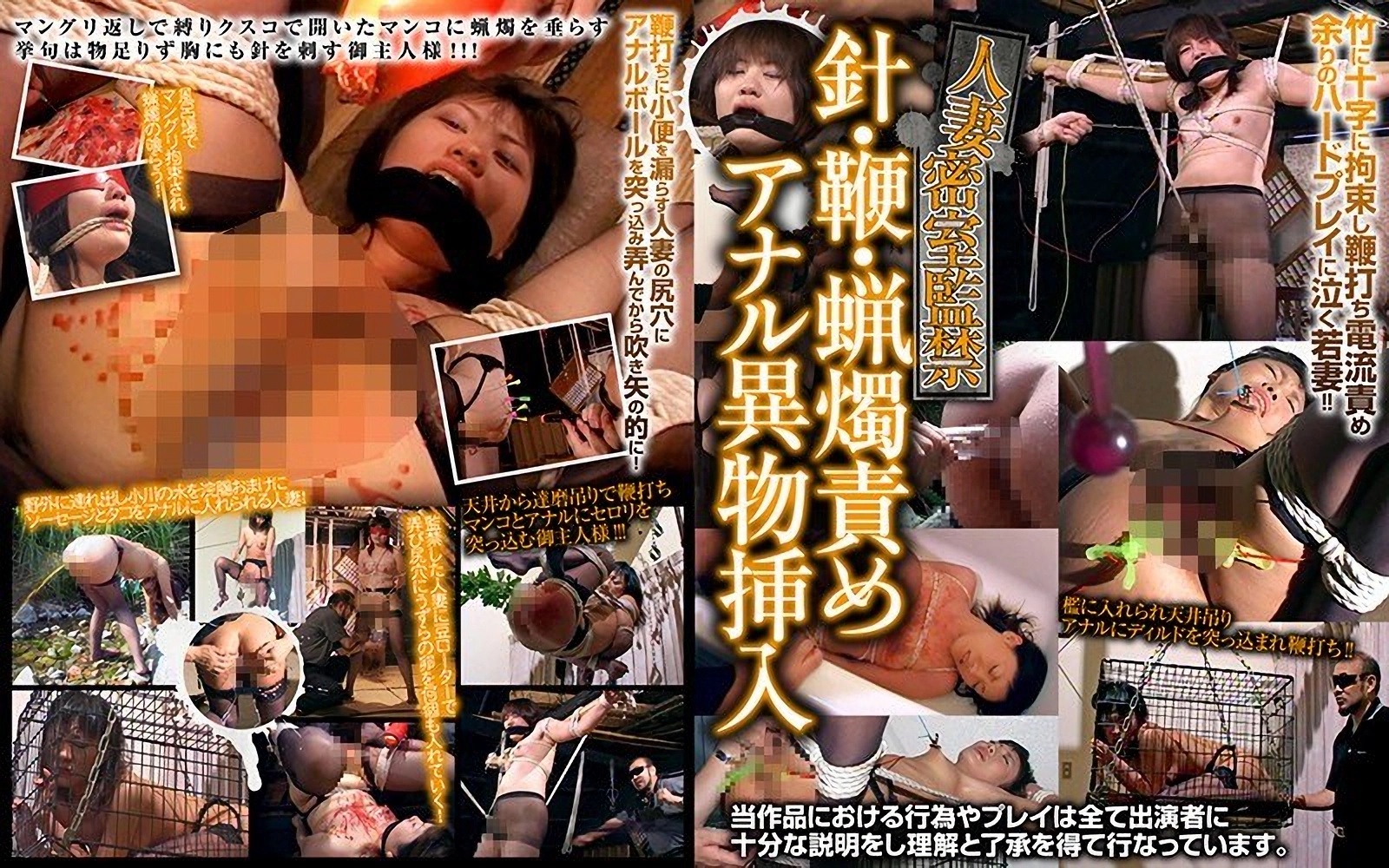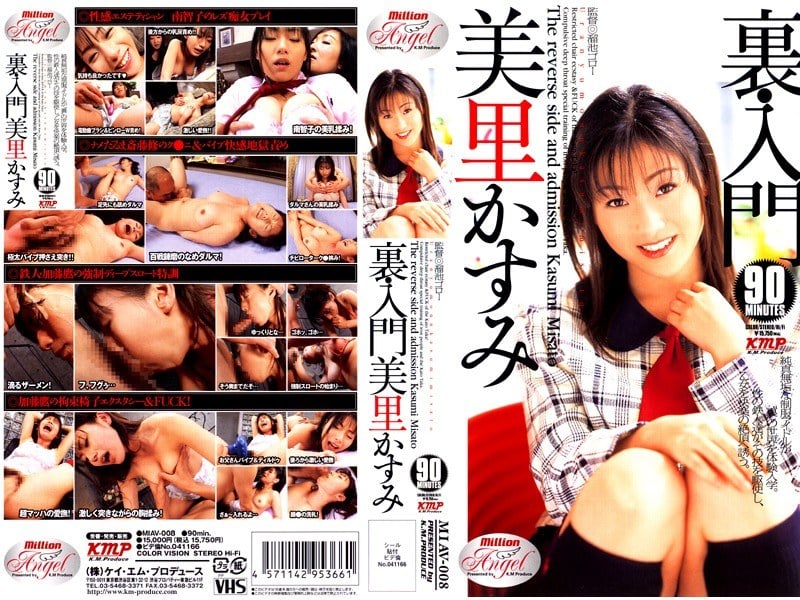History and Background
Art Video (Japanese: アートビデオ) is recognized as Japan’s first adult video studio specializing exclusively in S&M contentja.wikipedia.org. It was founded in 1982 by Yoshio Kawamura, and that same year the company released its first title, “Chikashitsu no Inma” (translated as “Incubus of the Basement”)ja.wikipedia.org. Art Video started as a very small operation – the initial crew consisted of only five people: a female model, male actor Toru Kuroda, legendary rope bondage master Chimuo Nureki, cameraman Kazuya Mine, and presumably Kawamura himself overseeing directionja.wikipedia.org. It is said that Kawamura purchased a home video camera originally to film his children, but ended up using it to shoot the first S&M video, marking the birth of Art Video’s debut workja.wikipedia.org. In its early days, Art Video sold videos exclusively via mail-order, without any retail packaging. The company simply advertised in a few S&M magazines and took orders by cash-in-mail; despite this minimalist approach, the response was tremendous – reportedly, orders poured in by registered mail every day, demonstrating the huge demand among S&M enthusiastsja.wikipedia.org. To expand distribution, in 1985 Art Video joined the Japan Video Ethics Association (often called “Vidérin” in Japanese)ja.wikipedia.org. By obtaining Vidérin approval, Art Video’s works could be legally sold in adult shops. The company began producing proper video packaging and started distributing its VHS tapes to adult video stores and rental outlets nationwideja.wikipedia.org. It’s worth noting that “Art Video” was frequently mistaken as the company’s legal name, but in reality it was a longstanding label/brand name used by Kawamura. The corporate entity was initially registered as Kawamura, Ltd. in 1983 and later renamed AVA Co., Ltd. in 1997, while continuing to use “Art Video” as the imprint for its productionsja.wikipedia.org.
In the 2000s, Art Video adapted to new distribution methods and industry structures. In 2004, the company launched its own S&M video website called “Kinbaku no Hanazono – Art SM Online”, which streamed high-quality extreme SM videos to subscribersja.wikipedia.org. Then, in 2010, Art Video became part of the Mousouzoku group’s “Black Label,” effectively integrating its distribution with a larger adult video networkja.wikipedia.org. (Mousouzoku is a major AV conglomerate in Japan, known for handling fetish and niche labels). Tragically, in April 2017, company founder Yoshio Kawamura – better known by his director alias Kazuya Mine – passed awayja.wikipedia.org. Following his death, the Art Video label ceased producing new works; after May 2017, no new titles were released, and instead the focus shifted to reissuing classic works from the VHS eraja.wikipedia.org. The official Art Video website was shut down on June 30, 2017ja.wikipedia.org. In effect, the brand ended active operations at that time, though its legacy catalogue continues to be circulated (more on that below).
Influence and Status in the AV Industry
Art Video, as a pioneering S&M-focused label from the early 1980s, had a significant impact on establishing the S&M/fetish genre within Japan’s adult video industry. In 1983 – just a year after Art Video’s founding – Shoichi Yoshimura, a former editor at a pornographic magazine, started a similar S&M video company named CineMagicja.wikipedia.org. Together, Art Video and CineMagic came to be known as the two “old guard” studios of Japanese S&M AVja.wikipedia.org. CineMagic, in particular, brought a new aesthetic to S&M videos by adapting novelist Dan Oniroku’s stories and introducing elegant packaging that completely changed the prior image of S&M videos as only dark and brutal; it entered the market with beautiful cover art and became a studio that rivaled Art Video in popularityja.wikipedia.org. Thanks to these two companies, the late-1980s saw S&M-themed AV transition from an underground niche to a recognized subgenre in mainstream adult video retail. Art Video, being the first dedicated S&M label, provided inspiration and a model for later studios to explore fetish content.
By the mid-1990s and 2000s, other companies built on the foundation laid by Art Video. Notably, Attackers, founded in 1996, gained fame for its high-production rape-themed and S&M story videosen.wikipedia.org. Attackers often featured popular AV idols in dramatic non-consensual plotlines, effectively bringing “rape fantasy” into the AV mainstream. In contrast, Art Video remained smaller-scale and fan-oriented, sticking to its hardcore fetish roots with lesser-known but dedicated performers. Despite the rise of such rivals, Art Video’s influence as a trailblazer remained intact – its existence proved that hardcore SM content had a viable audience, encouraging even larger companies to invest in fetish sublabels. Many industry commentators credit Art Video with creating the template for “mania” (extreme fetish) labels in Japan. Indeed, studios like Dogma, CineMagic’s later offshoots, and others in the extreme genre arguably owe a debt to Art Video’s early success.
Even after halting new productions, Art Video’s name lives on through the Mousouzoku distribution network. Within the Mousouzoku group, the label is still listed as “Art Video SM”, and its classic titles are available alongside other group releasesja.wikipedia.org. In that sense, the brand’s legacy continues to be felt. Art Video’s historical significance in the AV world is cemented by its role in legitimizing S&M videos as a category, and its brand has become synonymous with Japanese hardcore SM content. To this day, seasoned fans regard Art Video as a pioneer of SM AV, and its works are often referenced as genre-defining classics.
Notable Series and Label Imprints
Art Video generally operated under a single unified label – “Art Video” – but over the decades it produced numerous notable series and a few sub-imprints. The inaugural film Chikashitsu no Inma (1982) set the tone, and in subsequent years the studio rolled out many long-running series. Among the most famous are “Ryōki no Ori” (translated roughly as “Cage of Lust/Bizarre”), “Bizarre Orgasm” (ビザールオルガズム) and “Chikarō no Tōsakuma” (“Perverted Devil in the Dungeon”). These series, often spanning dozens of installments (for example, volume numbers for Ryōki no Ori and Bizarre Orgasm eventually exceeded 50 and 70 respectivelyamazon.co.jp), each centered on a particular theme of perversion or captivity. For instance, Ryōki no Ori typically depicts women confined and subject to bizarre torments, while Bizarre Orgasm anthologizes various extreme fetish scenarios culminating in climactic orgasms. By releasing such series in installments, Art Video cultivated a collector’s mentality among fans, who would follow each new volume to see what novel torment or scenario would be explored next.
While Art Video did not formally split into multiple distinct sub-labels the way some larger studios did, certain directors’ personal projects effectively functioned like sub-brands within the label. For example, director Dirty Kudo (ダーティ工藤) launched an eponymous “Dirty” series under Art Video in the early days, showcasing his particularly extreme style, before leaving to continue that line at Big Morkalja.wikipedia.org. Similarly, after joining the Mousouzoku group, Art Video releases were sometimes marketed under the “Mousouzoku Black Label”, indicating their inclusion in the group’s fetish line-upja.wikipedia.org. These cases show that Art Video allowed some branding differentiation for special projects. Nonetheless, the bulk of its output remained under the singular Art Video banner.
In addition to torture-centric series, Art Video also experimented with fetish crossovers – for instance, the “Kyonyū Paraphilia” and “Chōnyū Aido Collect” series combined large-bust themes with masochist slave narratives. These series targeted enthusiasts of specific fetishes (like big breasts) but delivered them in Art Video’s signature hardcore style.
Another noteworthy venture was Art Video’s move into online distribution with Kinbaku no Hanazono (the Art SM Online site) in 2004ja.wikipedia.org. Through that platform, the label serialized exclusive high-definition videos that could be considered a web series of extreme clips or scenes. This was one of the first attempts by a Japanese AV company to offer niche fetish content directly to consumers via streaming, illustrating Art Video’s willingness to adapt and create series in new mediums.
In summary, while Art Video did not have multiple formal sub-brands, it produced numerous series that functioned as recognizable sub-lines within its catalogue. These series helped reinforce the brand’s identity – each title became shorthand for a certain set of fetishes or scenarios, enabling fans to find content that suited their interests. The result was a rich library of series that solidified Art Video’s status as a haven for fetish content collectors.
Notable Actresses and Their Characteristics
Many distinctive AV actresses have appeared in Art Video’s productions, often leaving a strong impression due to the intense nature of the content. One of the most famous is Koi Iijima (飯島恋). Active in the late 1980s and early 90s, Koi Iijima gained notoriety partly because she bore a striking resemblance to AV superstar Ai Iijimaexcite.co.jp (despite the similar stage name, they are different actresses). Koi Iijima starred in several of Art Video’s SM works, portraying roles such as widows in bondage and women held captive. She was known for her sultry looks and her willingness to perform in highly humiliating scenes, which helped blur the line between mainstream idol AV and hardcore fetish video in that era.
Another notable name is Izumi Amami (天海いずみ), often hailed as an “SM Queen” of the 2000s. Amami frequently collaborated with Art Video and similar labels, and she became famous for her portrayal of rope-bound damsels and subservient roles. Her performances were marked by a remarkable endurance for pain and restraint, making her one of the go-to actresses for realistic bondage and torture scenes. She could convey both the agony and, at times, the twisted pleasure of prolonged torture, earning the admiration of many fetish fans.
Tsubasa Okuna (奥菜つばさ) is a prominent example of a mainstream AV idol who crossed over into Art Video’s sphere. Initially known for her appearances in softcore or glamour AV titles, Okuna later challenged herself with S&M roles under the Art Video label. Despite her gravure idol background, she embraced the degrading and painful scenarios with surprising commitment. In her Art Video appearances, Tsubasa Okuna often played glamorous yet ultimately “broken” heroines – characters who start off confident or haughty but are systematically humiliated and tamed. Her ability to transition from a high-profile studio (she was once an S1 exclusive) to performing in a hardcore fetish contest entry speaks to her versatility. In fact, she co-starred (along with actress Shion) in Art Video’s entry for the 2008 AV GrandPrix contest, “Jōnetsu M Inbaku Chōkyō: Nawa-zuki Binyū Mazo” (roughly “Passionate M Bondage Training: Rope-Loving Beautiful-Breasted Masochist”), directed by Kazuya Mineen.wikipedia.org. This demonstrated that even top-tier AV talent found Art Video’s content a space to push their boundaries.
Rinako Hirasawa (平澤里菜子) is another actress worth mentioning. She was active in the mid-2000s and gained attention for performing in extremely hardcore fetish scenes. Hirasawa participated in acts many other actresses would shy away from – for instance, one of her videos involved her role-playing as a pet dog with intimate interactions with real dogs (an infamous bestiality scene)zh.wikipedia.org, as well as public exposure and rape in broad daylight. Such extreme performances earned her a reputation as a “true masochist actress”, admired by the most hardcore genre fans. It’s noteworthy that after leaving the AV industry, Rinako Hirasawa even had bit parts in mainstream filmszh.wikipedia.org, showing the breadth of her experience.
Other notable performers include Sara Aoki (青木沙羅), a petite actress who nonetheless took on severe humiliation roles, and Saki Otsuka (大塚咲), a very famous AV idol who, after her mainstream career, made a surprising appearance in an Art Video production. Saki Otsuka, known for her work with top studios like S1, participated in the aforementioned AV GrandPrix entry for Art Video in 2008en.wikipedia.org. Her involvement was a noteworthy crossover and indicated that Art Video’s productions were intriguing enough to attract even big-name performers for special projects.
In general, actresses in Art Video titles often have a particular persona or physical trait that suits fetish roles. Many have an image as natural submissives (or can convincingly portray submission) – for example, some are renowned for their tearful, pleading expressions or the way they endure rope marks and whipping. Physically, Art Video frequently cast actresses who appealed to fetish tastes: some had large breasts (to be bound and abused), others had a mature or maternal aura (fitting “Madame in bondage” scenarios), and some looked innocent which made their degradation all the more dramatic. These women also needed a high tolerance for discomfort and a strong mental resolve to handle the demanding shoots. Their performances are a crucial element of Art Video’s impact – the raw, unfiltered reactions (screams, sobs, trembling, sometimes even involuntary bodily responses) of these actresses under duress gave Art Video videos a shocking realism that burned into viewers’ memories. Over the years, the label essentially built an unofficial troupe of “SM actresses” known for excelling in this niche, and their names (like Koi Iijima, Izumi Amami, Rinako Hirasawa, etc.) are still highly respected among fetish AV aficionados.
Prominent Directors and Directing Styles
Art Video’s productions were shaped by a number of distinctive directors, many of whom were as legendary in their niche as the performers. Foremost among them is Kazuya Mine (峰一也). This was actually the directorial alias of Yoshio Kawamura, the company’s founderja.wikipedia.org. As the principal director and producer, Kawamura (as Mine) was the creative driving force of Art Video’s early and most influential works. His style was versatile: he directed straightforward hard-SM torture videos as well as elaborately plotted rape dramas, adapting his approach to fit the content. Notably, during a certain period, when Mine directed more story-driven, narrative-heavy SM films, he used a pseudonym “Ryou Takamura”ja.unionpedia.org. This was done to separate his “dramatic” projects from his pure fetish documentaries. It demonstrates his keen awareness of tone – audiences of the time might have been surprised to learn that the grim pseudo-snuff video and the tragic S&M melodrama they watched were actually helmed by the same person, hence the alternate name to distinguish them. Under any name, Kazuya Mine was known for his meticulous attention to detail in depicting suffering and control. He often operated the camera himself, capturing the most minute changes in an actress’s expression as she underwent torment. His work laid the foundation for Art Video’s ethos: an unflinching, boundary-pushing portrayal of sadomasochism.
Another significant figure is Toru Kuroda (黒田透). Initially Art Video’s go-to male actor (often playing the sadist), Kuroda later retired from performing and turned to directingja.wikipedia.org. As a director, he adopted the moniker “MURUZOU” (夢流ZOU), a playful alias that hints at “mousou” (delusion) – fitting for his style that often included surreal or darkly humorous touches within the S&M context. Kuroda’s background as an actor informed his directing: he understood viscerally what the performers were experiencing. Consequently, his directing style emphasized realistic staging of abuse and genuine reactions. He was especially skilled in choreographing rope bondage scenes – likely drawing on his collaboration with rope masters – and ensuring that the tension (both physical and psychological) was palpable. Kuroda/Muruzou’s works have a reputation for being brutal yet oddly engaging, sometimes injecting a sly, perverse wit amid the depravity.
The role of rope artist (kinbakushi) is so central in S&M videos that Art Video lists Nawa Tooru (名和透) among its key creatorsja.wikipedia.org – note that “Nawa” literally means “rope”. Nawa Tooru was essentially Art Video’s in-house kinbaku specialist and also served as a director for bondage-focused titles. He ensured that the rope scenes were authentically and artfully executed. Under his direction, the process of tying – the intricate patterns of rope biting into skin, the progressive immobilization of the model – became a mesmerizing spectacle in itself. Nawa’s approach could be described as artisanal, often highlighting the aesthetics of restraint. His films tend not to rely on complicated storylines; instead, the act of binding and the ensuing struggle form the core narrative. For enthusiasts of rope bondage, Nawa Tooru’s contributions were a major draw of Art Video’s catalogue.
One cannot discuss Art Video’s directors without mentioning Dirty Kudo (ダーティ工藤). As his nickname “Dirty” implies, Kudo was known for pushing the gross-out and taboo envelope. He directed some of the studio’s most shockingly extreme fetish videos in the late 1980s, including scatology, urination, and other forms of edge play. Dirty Kudo’s work under Art Video was so distinctive that he eventually split off to form his own sub-label “Dirty” under the Big Morkal companyja.wikipedia.org. During his Art Video tenure, he contributed a unique brand of gonzo nastiness to the mix – sequences that might involve enema play, vomit fetish, extreme humiliation and other content many consider beyond the pale. While these subjects are definitely niche, Kudo had (and still has) a cult following among the most hardcore fetishists. His willingness to break taboos gave Art Video an additional layer of notoriety, cementing its image as a studio unafraid of “forbidden” themes.
Another early Art Video director is GOLDMAN, who debuted with the studioja.wikipedia.org. GOLDMAN’s style was somewhat experimental; he often tried to fuse fetish content with unconventional artistic elements. For example, he might incorporate dream-like sequences or symbolic imagery into an S&M setting – a rarity in such videos – making viewers both aroused and intellectually puzzled. His approach can be seen as injecting a dose of avant-garde into Art Video’s line-up, although always anchored by the requisite dose of cruelty and erotica.
In later years, a number of other directors contributed to the label, such as Shigesuke Saitō, Susumu Morita, Ken Tōzono, a figure known as Mineck Jr., and Umino TODO, among othersja.wikipedia.org. Each brought their own sensibilities, from Saitō’s focus on psychological domination to Umino’s outdoor and setting-based fantasies. The collective output of all these directors means that while Art Video’s content was consistently extreme, its style was far from monolithic – indeed, “though works are mostly hard SM, their content varies widely by director”ja.wikipedia.org. This diversity prevented the label’s output from growing stale; fans could always find a new twist or angle in each director’s take on SM. Art Video essentially functioned as a creative playground for S&M auteurs, and the result was a rich tapestry of fetish video styles, all under one brand.
Visual and Thematic Style
Visually, Art Video productions are characterized by their raw, unflinching portrayal of S&M acts. The camera does not shy away from the brutality: scenes of women tightly bound with ropes (often in elaborate shibari patterns), gagged and blindfolded, are staples. The cinematography often emphasizes the contrast of soft human flesh against harsh restraints – close-ups of rope digging into skin, arms wrenched behind backs, tears rolling down cheeks. The lighting and set design in earlier works were typically dark and claustrophobic, fitting the dungeon or basement settings frequently used. Unlike mainstream AV which might use well-lit studios or bedroom sets, Art Video frequently opts for bleak, immersive environments that evoke captivity and despair – think concrete cellars, warehouses, abandoned buildings. This not only creates an oppressive mood but also serves as a realistic backdrop that foregrounds the acts of sadomasochism themselves.
Art Video’s sound design further amplifies the intensity: the sharp crack of a whip, the hiss of candle wax hitting skin, the muffled screams through a gag – all are captured in visceral detail. Many viewers have noted that watching an Art Video title can be an almost harrowing sensory experience due to how convincingly the audio-visual elements convey pain and panic. There’s minimal use of music in most of these videos; instead, the “score” is often the ambient sound of chains, cranking winches, heavy breathing, and anguished cries. This verité approach predates what later came to be known as “gonzo” style – it’s as if the viewer is a silent observer in the chamber of torture.
Thematically, a central motif is the breaking of the victim’s will. Nearly all Art Video scenarios revolve around a power imbalance taken to extremes. Common setups include: a woman kidnapped by one or more men and subjected to systematic rape and torture (a scenario in line with Attackers-style plots, which Art Video was doing from its inception)en.wikipedia.org; a disciplinary setting where a female (like a student, nurse, or secretary) is punished by an authority figure; or a consensual-seeming scenario that turns non-consensual (such as an S&M roleplay that escalates beyond agreed limits). Regardless of the premise, the narrative trajectory is typically the same: the victim’s ordeal intensifies step by step. Early in a video, she might be fully clothed and defiant; by the middle, her clothes are ripped, she’s bound and crying; by the end, she may be reduced to a broken, compliant state or even depicted as having developed a perverse enjoyment (the controversial “forced orgasm” trope often appears).
One hallmark of Art Video’s style is the realistic depiction of rape fantasies. While always performed by consenting actors, the films strive to simulate non-consensual encounters with disturbing authenticityen.wikipedia.org. This includes actors employing physical roughness that looks genuinely painful, and actresses offering resistance that appears genuine – kicking, screaming, begging. The camera might adopt POV shots from the abuser’s perspective, making the viewer complicit, then switch to the victim’s perspective to heighten empathy and horror. This unvarnished portrayal of sexual violence sets Art Video apart from more sanitized or stylized takes on the genre. It has been both praised (for its boldness and impact) and criticized (for its graphic nature) in equal measure.
Another characteristic element is extended bondage and torture sequences. Art Video videos often dedicate lengthy scenes solely to the process of torture. For example, a five-minute sequence might focus on the methodical tying of a woman in suspension bondage: first her arms, then her legs, then hoisting her into the air, culminating in her body swinging while she moans. In another scene, a director might linger on an enema being administered, showing the humiliation in real time. These protracted scenes serve to fully immerse (or assault) the viewer’s senses – unlike typical AV which might cut away or montage such content, Art Video compels the audience to endure the event along with the victim. This style fosters an intense atmosphere of discomfort, which is precisely the effect many fetish viewers are seeking.
While focusing on realism, Art Video’s visuals are not necessarily crude; many scenes are carefully composed. For instance, a common visual in their films is the juxtaposition of beauty and horror – a nude female form tied in an artistic pose (e.g., tsuri suspension), illuminated by a single stark light, creating an image that is strangely beautiful even as it conveys suffering. Such images are perhaps unintentionally artistic, born from the inherently ritualistic aesthetics of Japanese kinbaku. Indeed, some fans and critics have noted that in the midst of extremely violent content, one can find frames that resemble avant-garde photography or performance art, especially in the hands of directors like Nawa or Mine.
Importantly, all Art Video productions adhered to Japan’s obscenity laws by using mosaic censorship over genitals. No actual uncensored penetration is visible (in line with Japanese regulations), though at times the mosaics are as thin as legally permitted, and the cinematography leaves little to the imagination. By pushing every boundary except that legal one, Art Video still managed to make the viewer feel as though they had seen something far more explicit. The focus on expressions, body language, and contextual storytelling often meant the explicit detail of genitals was secondary. Many fans have commented that in Art Video’s most powerful scenes, it is the look in an actress’s eyes or the quiver in her voice that arouses or unnerves, more than any graphic anatomical display.
It should be noted that Art Video occasionally dabbled in extreme fetishes beyond human S&M – such as simulated bestiality or scatology (especially under Dirty Kudo’s direction). These instances are relatively rare and were marketed clearly for what they were. In general, the core visual theme across Art Video’s library is the extreme domination of the female subject, whether through binding, flogging, electrocution devices, candle wax (“fire play”), needle play, or psychological degradation (verbal abuse, forced shame like urination, etc.). By consistently delivering such hardcore content, Art Video established a visual and thematic brand that is undeniably not for the faint of heart, but deeply satisfying for connoisseurs of true S&M erotica.
Genre Classification and Niche
In terms of categorization, Art Video’s works squarely fall into what Japanese retailers and fans call the “mania” or “maniac” genre – essentially, extreme fetish pornography. Retailers and online platforms typically label these videos with tags like SM, Bondage (緊縛), Torture, Rape (陵辱), Confinement (監禁), Slave Training (調教), etc. These tags help consumers identify content. For example, a video tagged as “緊縛” assures the presence of professional rope bondage scenes, whereas “凌辱” indicates explicit rape fantasy contenten.wikipedia.org. On DMM/FANZA and similar platforms, Art Video titles are often grouped under categories like “強姦/レイプ” (rape), “ハード系” (hardcore), or “拷問” (torture), setting them apart from vanilla categories like “idol” or “romance”.
This classification underscores Art Video’s status as a specialized fetish label. While most mainstream AV studios categorize films by actress or light fetish (like cosplay, schoolgirl, etc.), Art Video’s works come with more severe genre labels. One might see multiple fetish tags on a single title – for instance, a given video could be labeled Rope Bondage, Gang Rape, Enema, and Humiliation all at once, reflecting the layered nature of the content. As another example, some Art Video releases appear in the “Violence” or “Abnormal” sections of stores, alongside other extreme content producers.
In the Japanese AV industry’s internal lingo, Art Video’s products were often considered “chimuke” (血むけ) or “guro” to some extent, terms referring to blood and grotesque imagery, although actual gore was seldom shown due to censorship rules. But such terms point to how far into extreme territory these videos venture. They are a far cry from the softcore or even standard hardcore fare; instead, they align more with the global niche of BDSM pornography that emphasizes real-looking suffering and non-consent.
Art Video also helped solidify the idea of “女優別マニア” (actress-specific fetish following) – meaning fans would follow certain actresses across titles because they knew those actresses reliably delivered the kind of hardcore performances they craved. The presence of an actress like Izumi Amami or Rinako Hirasawa in a video essentially guaranteed a certain threshold of intensity, which became a selling point in itself. This created mini fandoms around these actresses that further entrenched the fetish community.
When looking at how Art Video’s content is presented today, one finds that the brand itself functions as a tag. On many sites, searching the studio name “Art Video” or “アートビデオSM” will immediately filter results to the most hardcore videos available, indicating the extent to which the brand is synonymous with its content. Moreover, in fan discussions and adult media write-ups, the term “Art Video-like” is sometimes used to describe any AV that has particularly cruel or unrelenting S&M scenes.
It’s also worth mentioning the regulatory aspect: All Art Video content had to pass through an ethics review (first under Vidérin, later under other organizations as industry rules changed). Over time, Japan’s regulations on adult content tightened in some respects. Certain extreme acts (bestiality, scat, etc.) became outright prohibited or at least unsellable on mainstream platforms. Art Video, being a member of an ethics association, had to toe these lines. For example, any actual bestiality scenes would not have been allowed in regulated distribution – they might have been simulated or cut in official releases. However, for the majority of Art Video’s focus – human S&M – the content remained allowable provided mosaics were applied and no lasting physical harm was depicted. They exploited the full latitude given by these rules. As a result, in the genre taxonomy of Japanese AV, Art Video sits at the extreme end of legally permissible content.
Summing up: Art Video’s genre identity is that of ultra-hardcore fetish AV. It catered to a segment of the audience seeking authentic depictions of sadism and masochism. The label became a hallmark for fans who required more intensity than what typical AV offered. Through consistent branding and by embracing its niche status, Art Video in effect set the standards and boundaries for what “SM genre AV” means in Japan. Its tags and categories are a testament to a company that unabashedly embraced extreme sexual themes and, in doing so, carved out a respected position within that subculture.
Comparisons with Other Studios (e.g., CineMagic)
Comparing Art Video with its contemporaries highlights both similarities due to genre and differences in approach. Take CineMagic, for example. Founded in 1983 (one year after Art Video) by Shoichi Yoshimuraja.wikipedia.org, CineMagic is often mentioned in the same breath as Art Video as the twin pillars of Japan’s SM AV sceneja.wikipedia.org. Both studios focused on S&M and bondage, but CineMagic’s style diverged by incorporating cinematic storytelling and polish. Yoshimura was inspired by the works of Oniroku Dan (a famed SM novelist), and originally wanted to produce S&M films in a theatrical style. As a result, CineMagic’s videos frequently have more elaborate plots, character development, and a high-gloss finish. They even dabbled in non-SM “idol” videos in the late 80s under a sub-label “Annie”ja.wikipedia.org, although eventually they returned to primarily SM content.
One of CineMagic’s signature moves was to use beautiful packaging and cover art, which gave their videos a refined image and helped attract a broader audienceja.wikipedia.org. This strategy “prettified” S&M and took away some of the stigma of darkness that had surrounded the genre. CineMagic’s emergence with these visually appealing covers and somewhat sanitized brutality essentially split the S&M fanbase – those who appreciated artistry gravitated to CineMagic, while others who craved raw intensity stayed loyal to Art Videoja.wikipedia.org.
Art Video, in contrast, maintained a more underground, gritty aesthetic for much longer. Its covers were often explicit and lurid, reflecting the actual content without much artistic filter. Where a CineMagic cover might show a tasteful photograph of a bound woman in soft lighting, an Art Video cover might graphically display a weeping, gagged victim in distress. These divergent marketing philosophies mirror the difference in approach: CineMagic wanted to “film S&M elegantly”, whereas Art Video wanted to “capture S&M realistically”. Both strategies found their success and their fans.
Content-wise, CineMagic’s scenes (especially in early and mid-period) were often dramatized enactments of Oniroku Dan’s stories – meaning there was usually a romanticized plot of a woman’s downfall and eventual twisted acceptance of her fate. They often employed soft-focus cinematography and dramatic music. Art Video’s scenes, on the other hand, felt more like one was watching a found tape from a kidnapper’s basement. Minimal to no music, harsh lighting, direct physicality. CineMagic might cut away at the most gruesome moment or imply certain tortures off-screen; Art Video would put it on full display as much as allowed. For example, in a suspension torture, CineMagic might show the woman already tied and then perhaps fade-out after some screams, leaving some to imagination. Art Video would likely show every step: tying her, hoisting her, maybe leaving her there for minutes on camera, and depicting any aftermath (like her collapse or soiling herself).
Despite these differences, the two studios had a symbiotic relationship in the market. They were friendly rivals, often referencing each other’s innovations. In fact, some performers and directors worked with both companies at different times. The Japanese press sometimes labeled CineMagic and Art Video collectively as “SM AV’s two veterans”, and fans would often collect works from both to satisfy their full range of interests in the genre.
Another interesting comparison is with Attackers, which started mid-90s and by the 2000s became the largest name in “rape-themed” AVen.wikipedia.org. Attackers differs from Art Video in that it’s a mainstream label (originally part of the Soft On Demand group) and it employed big-name actresses to enact its non-consensual storylines. Attackers videos typically have a higher production budget: better sets, cinematography, and often a hero/villain dynamic where a famous actress is victimized by men (teachers, criminals, etc.) in a storyline culminating in her rescue or downfall. In effect, Attackers commercialized what Art Video had been doing on a smaller scale – they took the concept of simulated rape and made it a widely recognized AV category, often releasing glossy titles in series like “Woman in ○○” (Woman in Captivity, etc.).
Art Video and Attackers share the thematic core of sexual violence, but their executions diverge. An Attackers film might be akin to an exploitation thriller – with some build-up, a variety of scenes, then often some resolution – packaged almost like a movie with famous faces. An Art Video film is more akin to a smuggled torture tape – relentless from beginning to end, with unknown (but highly convincing) actors, and often no clear resolution beyond the final broken state of the victim. Attackers might aim to evoke a mixture of titillation and sympathy from the audience (since viewers likely know the idol actress and feel for her character), whereas Art Video aims squarely to shock, arouse, and challenge the audience, often with no sympathetic relief.
One could say Attackers made “rape fantasy” palatable to the general adult video audience by framing it in familiar narratives, whereas Art Video kept it raw for connoisseurs. However, Attackers’ success in the 2000s did demonstrate a mainstream appetite for such content, something Art Video had long catered to in the shadows. In a sense, Attackers owes a debt to early studios like Art Video for proving that market existed.
There were also other smaller studios like Dogma (founded by former SOD director Ganari Takahashi in 2001) that pushed boundaries. Dogma took fetish to extremes (including scat, extreme humiliation, etc.) beyond even what Art Video typically did. However, Dogma had the advantage of coming later, learning from predecessors, and it existed in an era with a strong distribution network (Hokuto). Dogma’s style, though extreme, often had a modern “gonzo” flavor – less psychological torment, more overt shock, and sometimes comedic elements. In some ways, Dogma was the spiritual successor to Art Video’s mantle of extremity, though Dogma carved its own niche focusing more on other fetishes like forced consumption, which Art Video touched on less frequently.
Comparing Art Video to Dogma or others is a reminder that Art Video primarily stuck to human-on-human S&M and rape scenarios (with occasional detours), whereas some later studios diversified into pornographic “horror” (including things like fake snuff, monster or beast fantasies, etc.). Art Video by and large stayed within a certain boundary of plausibility – no supernatural elements, minimal use of props like latex costumes; it was very much everyday cruelty. That consistency helped define its brand.
In conclusion, when placed alongside studios like CineMagic and Attackers, Art Video stands out for its uncompromising authenticity and underground spirit. CineMagic might be the refined, artful face of SM, Attackers the glossy, story-driven face, but Art Video was the gritty, fearless face. Each of these studios played a role in the evolution of fetish porn in Japan: CineMagic legitimized it artistically, Attackers popularized it commercially, and Art Video actualized it in its purest form. For serious fans and creators of BDSM content, Art Video often remains the benchmark of “how far one can go” within legal and ethical confines, a legacy that speaks volumes about its unique place in AV history.
Distribution Channels and Sales
Art Video’s distribution history reflects the broader changes in the adult video market from the 1980s through the digital era. Initially, as noted, the studio relied on direct mail-order salesja.wikipedia.org. Adverts in niche magazines allowed interested buyers to send payment and receive VHS tapes discretely. This method suited the taboo nature of the content at the time, as many mainstream stores wouldn’t carry such extreme material before ethics approval. After joining the Video Ethics Association in 1985, Art Video began distributing its VHS tapes through established adult video wholesalers and retail shopsja.wikipedia.org. By the late ’80s and ’90s, if one visited a specialty adult store in Japan, there would often be a “Mania Corner” or SM section where Art Video titles (with their notorious covers) could be found. They became staples of the back-room shelves alongside other fetish labels.
Art Video, being a smaller label, often partnered with larger distribution groups for logistics. Eventually, Art Video’s products were handled by distribution companies under the Outvision/Hokuto Corporation umbrellaen.wikipedia.org. Hokuto Corp (via its Outvision brand and DMM retail platform) became one of Japan’s largest adult video distribution networks, and by late 2000s it was carrying products from over 150 studiosen.wikipedia.org – Art Video included. This partnership significantly boosted Art Video’s reach: its DVDs could be ordered in mainstream adult catalogs and were listed on DMM’s online store even before the digital revolution fully took off.
With the arrival of the internet and digital media, Art Video adapted by launching its official site in 2004 (as discussed) for direct video streamingja.wikipedia.org. Although that site is now defunctja.wikipedia.org, the move signaled the label’s attempt to embrace online distribution early on. However, the more enduring impact in the digital era has come through platforms like DMM (now Fanza). Today, fans can find Art Video’s classic titles on Fanza’s site, where the label is listed (under the Mousouzoku group affiliation). Many of its DVDs have been reissued and made available for purchase or rental in DVD format, and increasingly, older titles have been converted to digital downloads. For instance, Fanza lists numerous Art Video works with high-resolution covers and descriptions, and users can pay to stream them instantly.
Furthermore, after Art Video stopped producing new content, the Mousouzoku Black Label initiative in 2010 saw some Art Video classics being redistributed as part of Mousouzoku’s own lineja.wikipedia.org. Essentially, Mousouzoku took over curating and selling Art Video’s back catalog. Since Mousouzoku is a prominent group that operates other fetish labels, this integration meant that Art Video’s library benefitted from the group’s distribution muscle. Fans browsing Mousouzoku’s Black or fetish sections would come across Art Video titles alongside newer fetish releases, ensuring the brand remained visible.
In addition to official channels, second-hand markets have been important for collectors. Out-of-print Art Video VHS tapes or original DVDs often show up on auction sites like Yahoo! Auctions Japan, sometimes fetching high prices if they are rare editions or uncensored versions (though official releases were all censored, there are always rumors of “leaked” tapes, etc.). The constant trading of these items indicates that interest in the brand persists even among those seeking physical copies for nostalgia or collection.
International distribution of Art Video content has been limited but not nonexistent. In the pre-internet days, some Art Video VHS tapes found their way overseas through gray-market importers. They often became part of Western underground video trading circuits, valued for their shock value. While Art Video never had an official Western distribution, its reputation certainly crossed borders. Nowadays, with the internet, global fetishists can access these videos via fan subtitling communities or simply by buying through Fanza (some international credit cards allow purchases, and there’s a dedicated R18.com site that was affiliated with DMM/Hokuto, though by 2023 R18 had closed, pushing users back to Fanza with region restrictions).
One more aspect to note is that regulatory changes have affected distribution. For instance, by the mid-2010s, mosaic standards became stricter and certain extreme content (like simulated bestiality) could not be sold on major platforms. As a result, some older Art Video scenes might be omitted or heavily edited in re-releases to comply with current standards. There have been instances where Fanza’s listing for a particular title mentions that it’s a “digest” or “edited version” for that reasonja.wikipedia.orgja.wikipedia.org (some footnotes indicate content like bestiality scenes are cut). Collectors often seek the original VHS for uncut content.
Despite these challenges, Art Video’s mainstream availability is still fairly good: Most human-centric S&M titles are fully available, meaning the label’s core library is intact online. Fans can easily find and legally purchase classics such as Ryōki no Ori episodes, Bizarre Orgasm volumes, etc., either in DVD form or through digital rental. The label’s inclusion in large marketplaces ensures that new generations of fetish fans who never visited a 90s AV shop can still discover Art Video with a few clicks.
In summary, Art Video’s sales channels evolved from mail-order isolation to integrated distribution with industry giants. This journey from envelope-order VHS tapes to HD streams on Fanza mirrors the adult industry’s evolution. And it highlights an interesting phenomenon: content once considered too extreme for store shelves is now just another category filter on a website. The partnership with Mousouzoku/Hokuto (and by extension DMM/Fanza) has allowed Art Video’s legacy to survive the decline of physical media. As of 2025, an interested viewer in Tokyo or overseas can watch an Art Video title on their computer or smart TV, something unimaginable back in 1982 when fans relied on discreet mail packages. Thus, through adaptation and the support of larger distributors, Art Video has maintained a presence in the market, making its mark accessible for posterity.




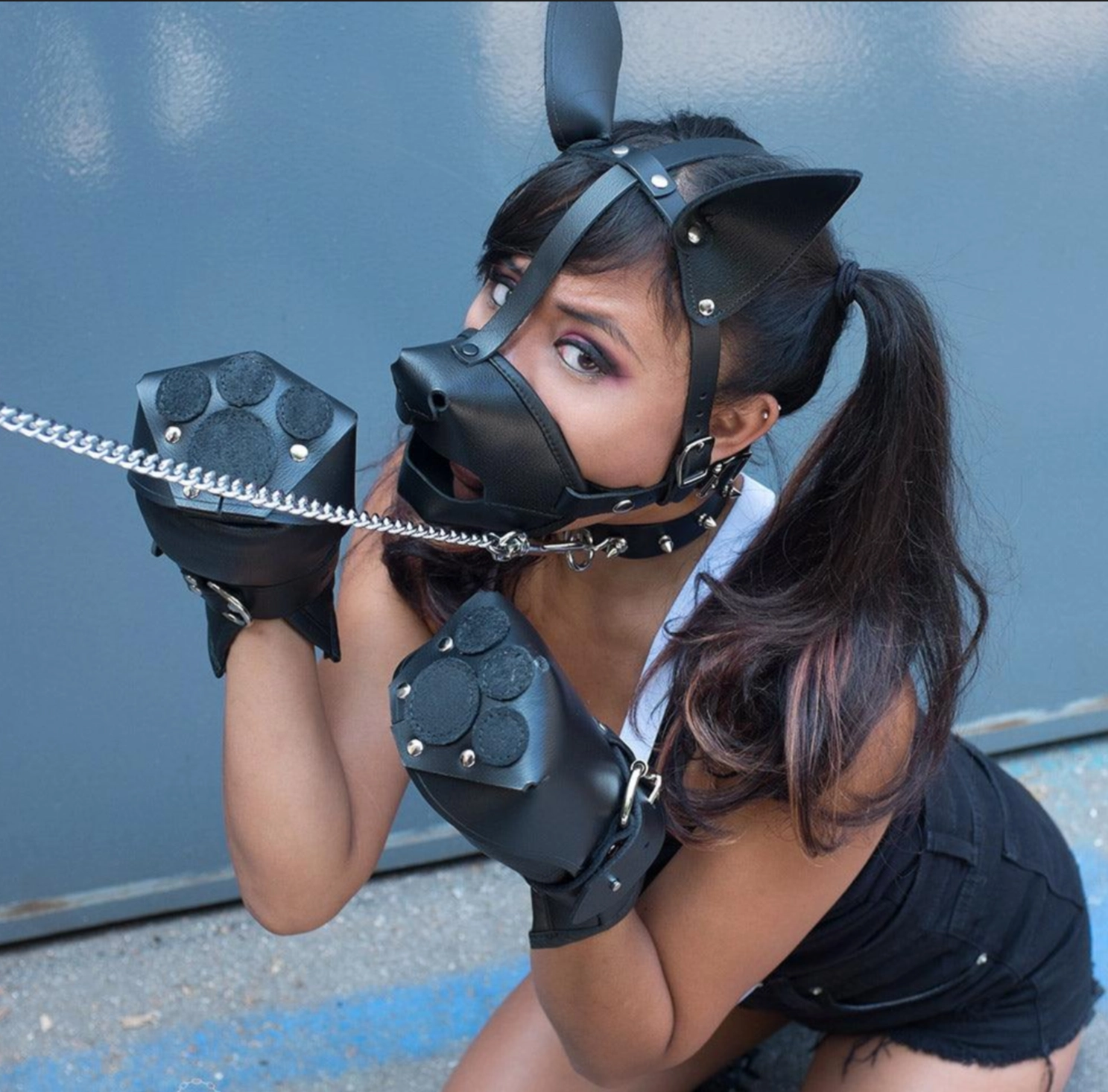
![[Art Video] 1938 生肉愛奴 沙里奈 片山沙里奈](https://bdsmwild.com/wp-content/uploads/2024/04/01630-art1938-bdsmwild-【Exclusive】Art-Video-1938-生肉愛奴-沙里奈-片山沙里奈.jpg)
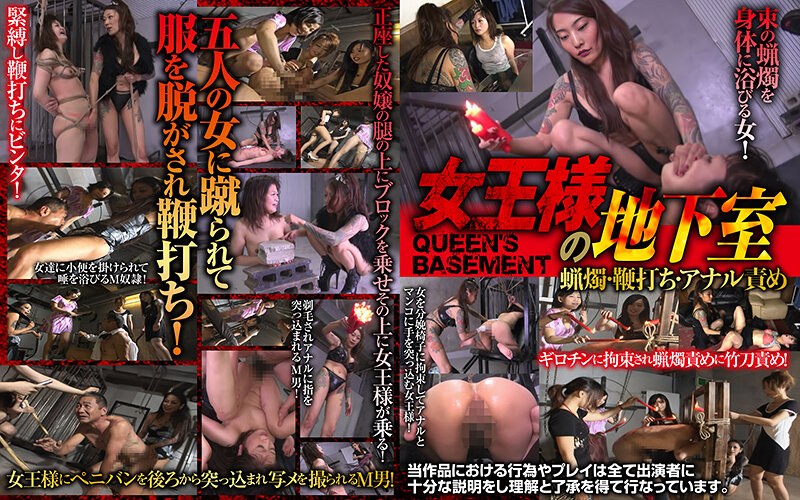
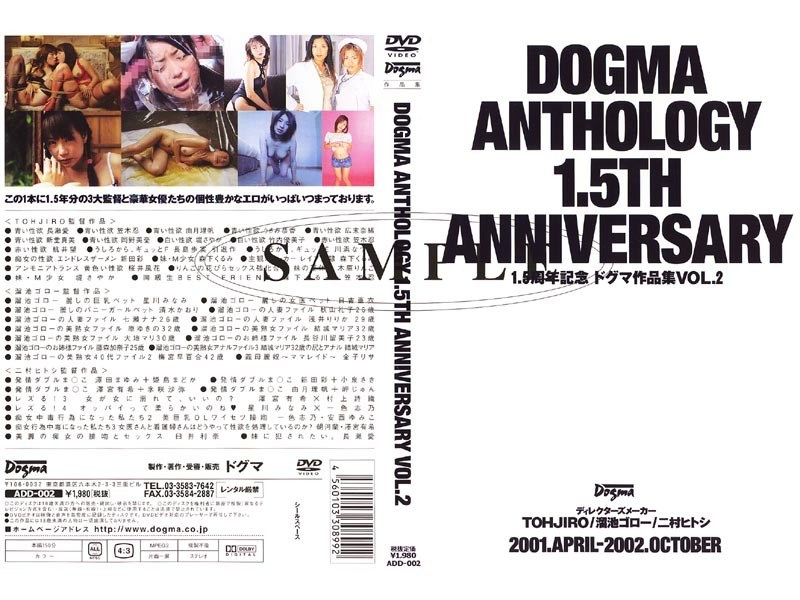
![[Art Video] 1754 淫乱美麗奴倶楽部 尾崎麻衣 水野ひとみ](https://bdsmwild.com/wp-content/uploads/2024/03/01574-art1754-bdsmwild【Exclusive】-Art-Video1754-淫乱美麗奴倶楽部-尾崎麻衣-水野ひとみ.webp)
